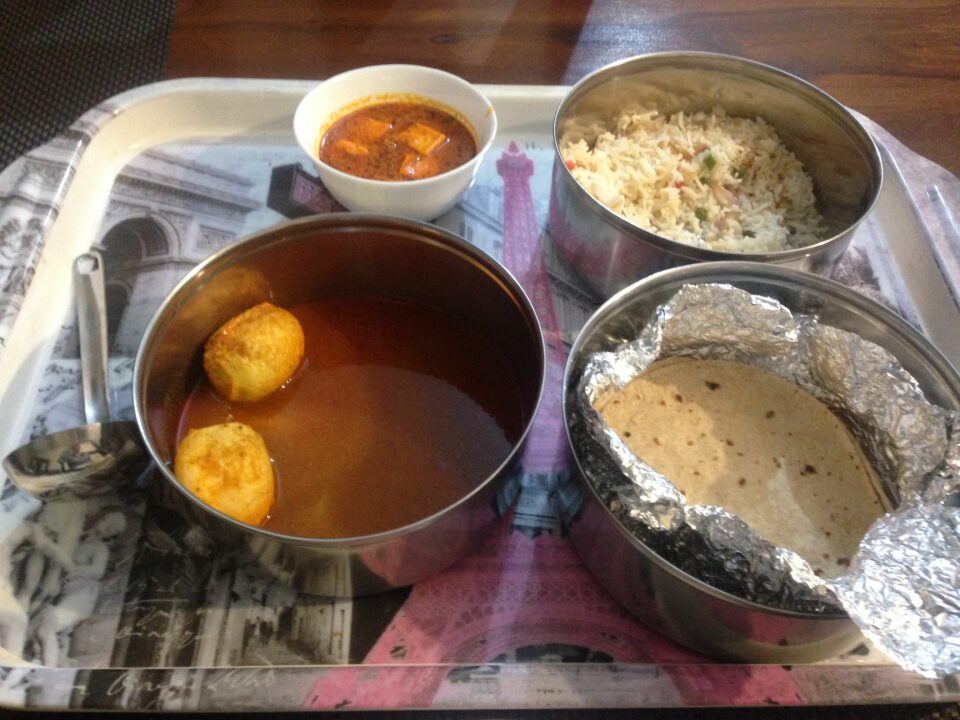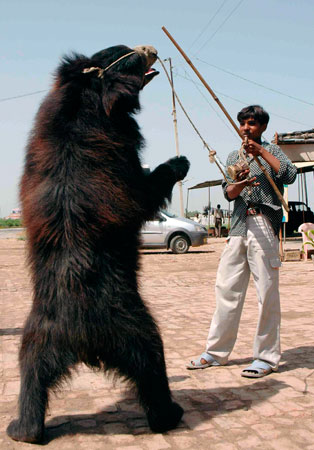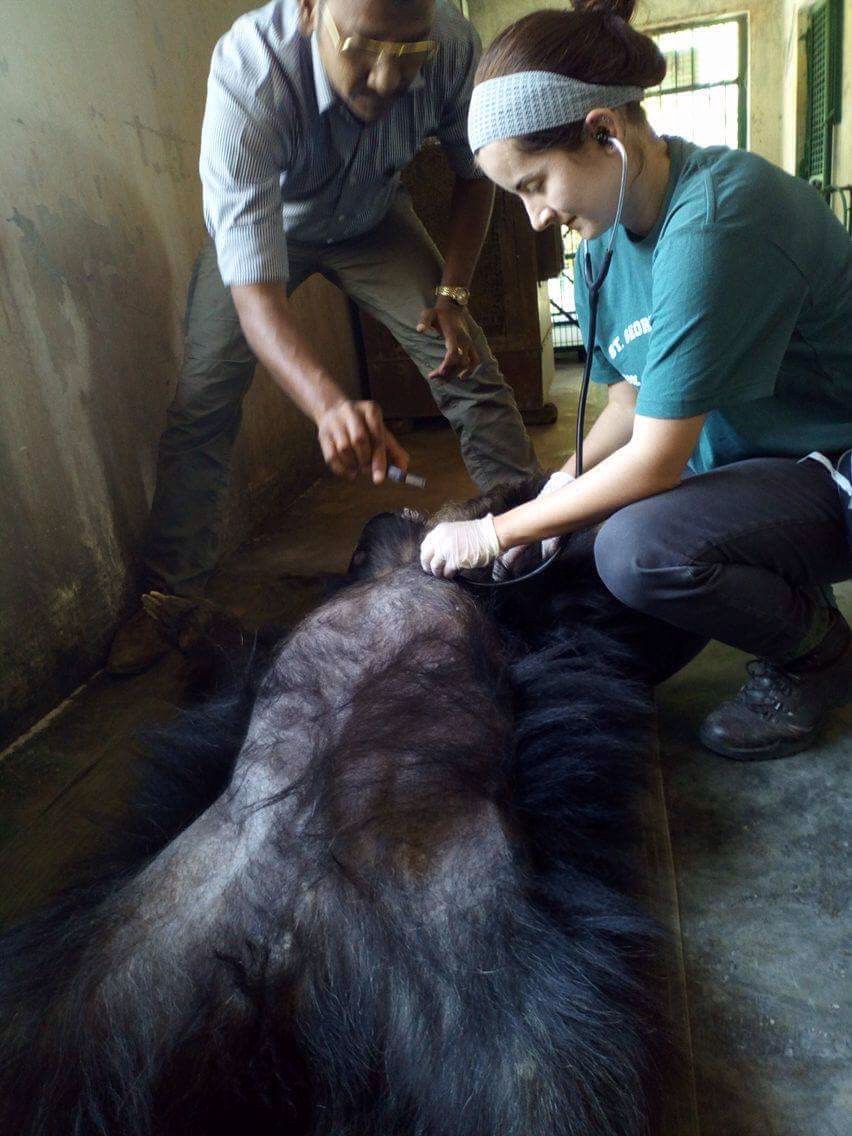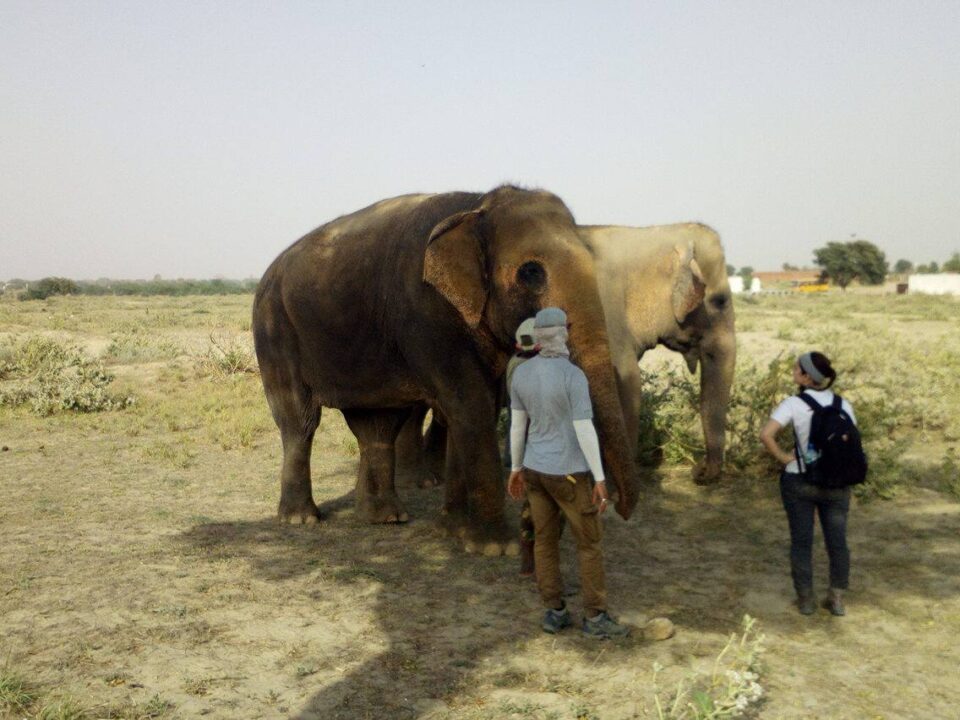DUB>LHR>DEL>BKK
I went to India in 2017 as part of my final year rotation externship requirements after contacting Wildlife SOS. I arrived in Delhi and the sanctuary had sent a driver to collect me and take me the three-hour journey to Agra. The first thing that strikes you about India is the roads filled with cars, people, carts, mopeds…..cows! The scenery was breathtaking as we travelled through the countryside. There were fields on either side of the highway dotted with wild peacocks where women were tending to crops dressed in colourful saris.
My accommodation was in an apartment block about 10 minutes from the sanctuaries. Wildlife SOS have two sanctuaries in Agra; one for elephants and one for sloth bears and I was going to be spending one week at each sanctuary shadowing the vets. I remember for the first week I was the only volunteer so I was in the big apartment block on my own. When I went out to the dining room on the first morning there were silver tiffin boxes waiting for me but to my surprise, it was curried eggs and rice. I thought someone must have left their dinner there from the night previously, but it turns out this is normal breakfast food in India. I wondered why the housekeeper looked at me oddly when he found I hadn’t touched anything, I felt terrible! As a lover of Indian food, I was more than happy at the prospect of having curries for breakfast, lunch and dinner from then on!


The first week I was with the sloth bears. These bears have come from the dancing bear trade. A tribe called the Kalandars began the dancing bear trade several hundred years ago as a means of earning a living. You have probably seen photos like this before. Wild bear cubs are taken from their mothers (often the mother is killed) and are then forcibly tamed using a piercing made by a hot poker and a rope through their nose. As the bear grows older it is manipulated using this rope through a headpiece, as in the picture, and forced to dance to music for money.

Many of these bears have liver problems due to their previous owners not feeding the correct diet and almost all have facial scarring from the rope going through their nasal bone. When I was there, most of the work that I helped the vets with was routine health checks which involved taking blood and doing abdominal ultrasound scans primarily to check the bears’ livers. On our tea breaks, we had the most delicious chai tea you’ve ever tasted!
I remember that one night we were sitting around the dinner table at the apartment complex and I noticed out of the corner of my eye that an adult male macaque had walked in. Without hesitating, he walked into the kitchen, went to the fridge and opened it by the handle to peruse the contents. It was amazing! He looked just like a human would who was looking for a midnight snack! Adult macaques can be quite aggressive so I said as calmly as I could that there was a macaque in the kitchen and we slowly moved to a different room until he was shooed out by the housekeeper. He was apparently quite a regular visitor to the fridge!
None of the bears at the sanctuary will be released and a lot of them are irreparably damaged both mentally and physically. Some still ‘dance’ in the corner of the enclosures. It is heartbreaking to watch. I always find it interesting what you learn on the wildlife trips about the story behind why the animals are there and what the future looks like for them, as there is always so much more to learn than meets the eye. Something I found very hard to come to terms with was that in India, with certain wild animals, you need permission from the government before you can euthanise them and this process can take years. The vet was telling me that they rarely apply for these permits but the last time they did it was for a bear who was paralysed in all four legs. It took two years for the permit to come through and meanwhile, the animal is suffering. So if the quality of life is deemed poor enough to warrant euthanasia, there isn’t a lot that can be done, certainly not quickly anyway. The vets at Wildlife SOS do their best though and do a fantastic job of keeping them as comfortable as possible.
Through hard work and determination, Wildlife SOS has eradicated the dancing bear trade. As of 2009, the last known dancing bear was taken off the streets of India. Kartick Satyanarayan and Geeta Seshamani achieved this by creating the Kalandar Rehabilitation Project. The project offered the owners of dancing bears vocational training if they opted to relinquish their bear to the sanctuary. As it stands, over 40% of the staff working at Wildlife SOS are from the Kalandar tribe. This is an exceptional example of a successful conservation effort and something I’m proud to have seen first hand.
During my second week, I was at the elephant sanctuary, which is just a five-minute journey up the road from the bear sanctuary. These elephants had been rescued from street begging, circuses and logging. As such, they are habituated to humans. They have large enclosures, go for a bath every day in the river and are taken for long walks twice a day chain-free. Their mahouts obviously adore them and they are no longer shackled or have spikes used on them to make them comply. Again, because of their many years of human contact, the elephants cannot be released. You feel so conflicted when you go to projects like this. On one hand, you feel privileged to be able to get so close to the animals without doing them any harm (unlike riding elephants!) but on the other, you know it is because they have been exploited by humans that you can do that.

From walking on hot concrete many of them have chronic foot and joint problems; as such veterinary duties often included flushing abscesses (my favourite!) Thankfully Wildlife SOS is doing sterling work in making sure they are well cared for and live out their days in a safe environment.













I didn’t get to travel around India as much as I would have liked but would love to go back someday. Nothing can prepare you for how crazy the roads are and the hustle and bustle of the streets but that is all a part of the adventure! The people are friendly and welcoming, the food is as amazing and the Taj Mahal and Agra Fort are breathtaking! As a solo female traveller, I never felt unsafe during my time in India, however, of course always use your common sense (as you would anywhere else) and it is a place you definitely don’t want to miss out on.
You can check out a video of my India trip here!






